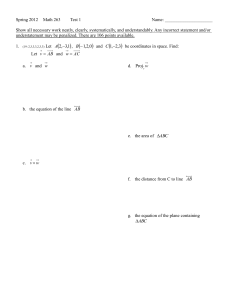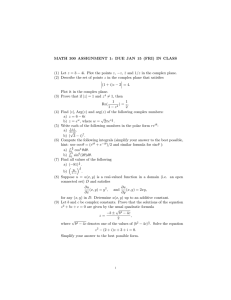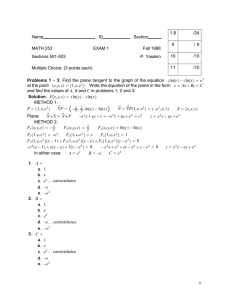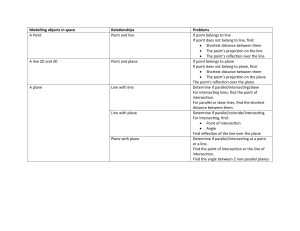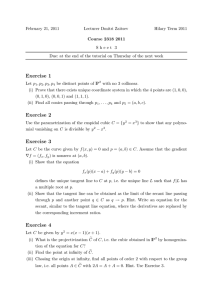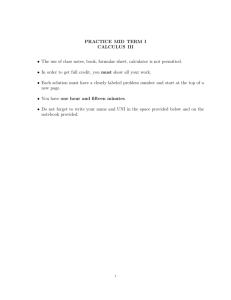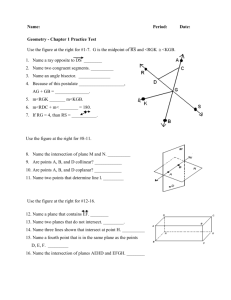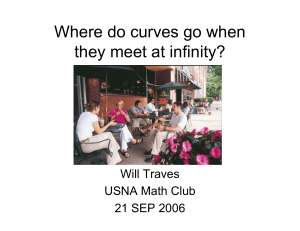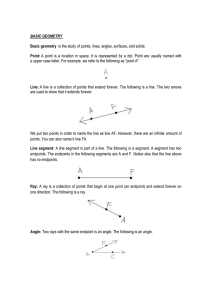January 28, 2011 Lecturer Dmitri Zaitsev Hilary Term 2011 Course 2318 2011
advertisement
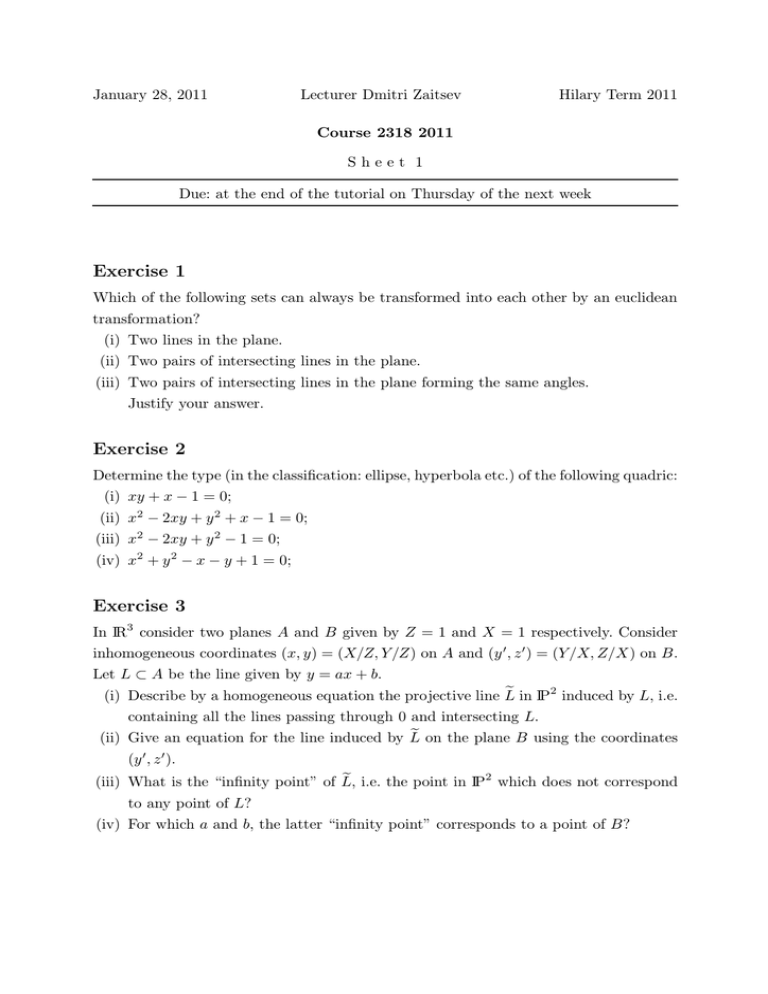
January 28, 2011 Lecturer Dmitri Zaitsev Hilary Term 2011 Course 2318 2011 Sheet 1 Due: at the end of the tutorial on Thursday of the next week Exercise 1 Which of the following sets can always be transformed into each other by an euclidean transformation? (i) Two lines in the plane. (ii) Two pairs of intersecting lines in the plane. (iii) Two pairs of intersecting lines in the plane forming the same angles. Justify your answer. Exercise 2 Determine the type (in the classification: ellipse, hyperbola etc.) of the following quadric: (i) xy + x − 1 = 0; (ii) x2 − 2xy + y 2 + x − 1 = 0; (iii) x2 − 2xy + y 2 − 1 = 0; (iv) x2 + y 2 − x − y + 1 = 0; Exercise 3 In IR3 consider two planes A and B given by Z = 1 and X = 1 respectively. Consider inhomogeneous coordinates (x, y) = (X/Z, Y /Z) on A and (y 0 , z 0 ) = (Y /X, Z/X) on B. Let L ⊂ A be the line given by y = ax + b. e in IP2 induced by L, i.e. (i) Describe by a homogeneous equation the projective line L containing all the lines passing through 0 and intersecting L. e on the plane B using the coordinates (ii) Give an equation for the line induced by L (y 0 , z 0 ). e i.e. the point in IP2 which does not correspond (iii) What is the “infinity point” of L, to any point of L? (iv) For which a and b, the latter “infinity point” corresponds to a point of B?
